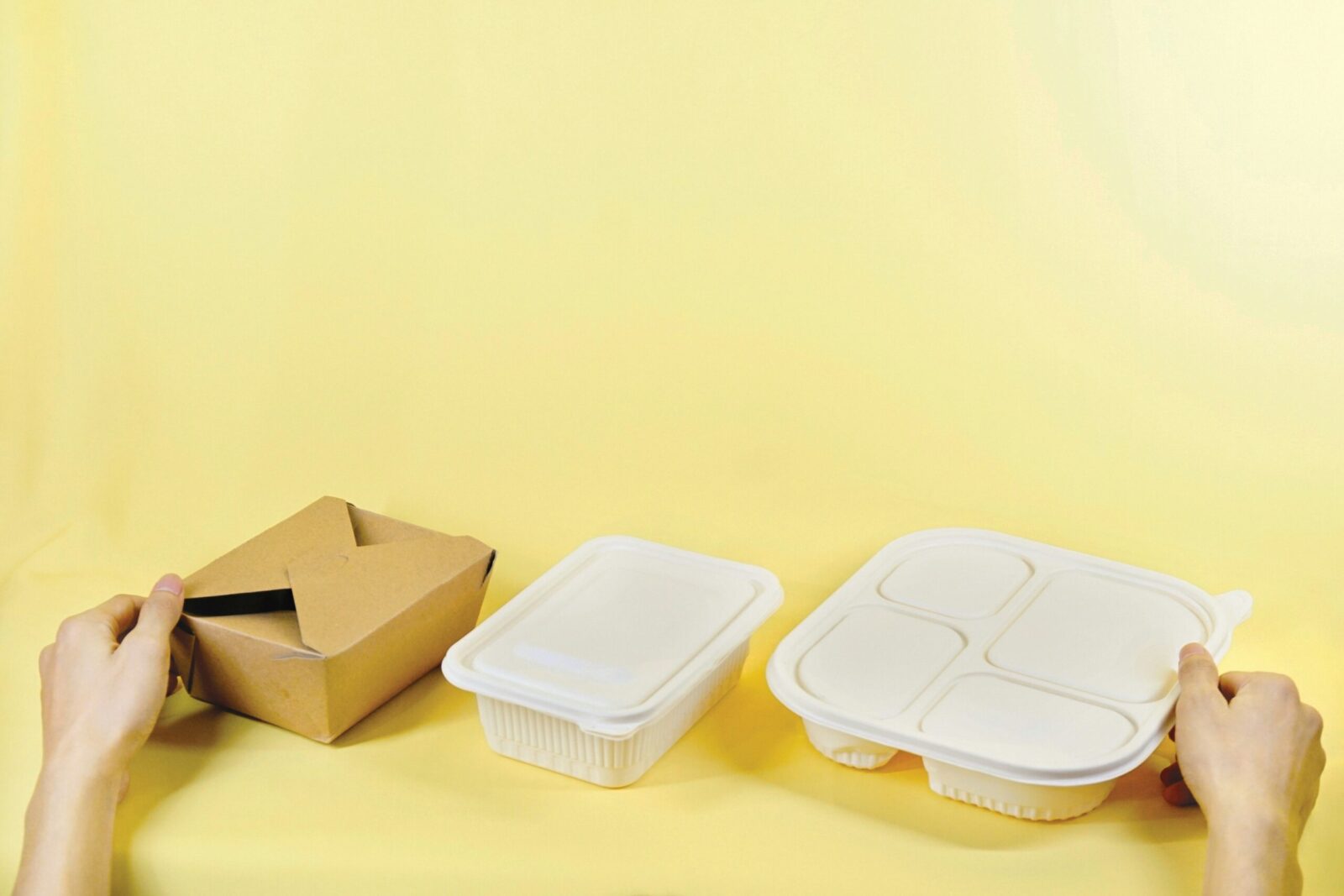
The Importance of EN ISO 20345 Standard
Safety is a definite concern in industries where employees are exposed to hazardous conditions. Safety footwear plays a critical role...

Get 20€ off on your first order!
Biodegradable packaging has become increasingly important in recent years as the world seeks more sustainable alternatives to traditional packaging materials. One standard that is widely recognized in the industry is EN 13432. In this article, we will dive deep into the world of EN 13432 and provide you with a comprehensive understanding of its significance in the packaging industry.
EN 13432 is a European standard that specifies the requirements for packaging materials and products to be considered biodegradable and compostable. This standard sets the criteria for the packaging to break down into natural elements, such as water, carbon dioxide, and biomass, under specific composting conditions.
Composting is a natural process in which organic materials decompose into nutrient-rich soil. EN 13432 ensures that packaging materials can fully biodegrade within a certain timeframe, leaving no harmful residues behind.
In the context of EN 13432, biodegradable packaging refers to materials that can be broken down by microorganisms through natural processes. This allows the packaging to return to the environment without causing pollution or harm.
Biodegradable packaging is often made from renewable resources, such as plant-based materials or bio-based plastics derived from sources like cornstarch or sugarcane. These materials have a significantly lower environmental impact compared to traditional packaging made from fossil fuels.
EN 13432 plays a crucial role in the packaging industry as it helps ensure that products labeled as biodegradable and compostable meet specific standards. Without a universally recognized standard like EN 13432, there would be no clear guidelines for manufacturers or consumers to follow.
EN 13432 provides transparency and accountability, allowing consumers to make informed choices when it comes to purchasing biodegradable packaging. It also encourages innovation in packaging design and materials, driving the industry towards more sustainable practices.
Moreover, this standard promotes a circular economy by supporting the concept of “cradle to cradle” where packaging materials can be returned to the environment in a safe and beneficial way. By establishing composting as a viable end-of-life option for packaging, this standard contributes to reducing waste and minimizing the reliance on landfilling or incineration.
Furthermore, EN 13432 takes into account the specific conditions required for composting. It ensures that the packaging materials can biodegrade within a reasonable timeframe, typically around 12 weeks, under controlled composting conditions. This timeframe allows for efficient composting processes while still maintaining the integrity and functionality of the packaging during its intended use.
Additionally, it considers the potential impact of the packaging on the composting process itself. It sets limits for the presence of heavy metals and other harmful substances in the packaging materials, ensuring that they do not hinder the composting process or contaminate the resulting compost. This aspect is crucial for maintaining the quality and safety of the compost, which can then be used to enrich soil and support sustainable agriculture.
In conclusion, EN 13432 is a comprehensive standard that not only defines biodegradable packaging but also establishes guidelines for its proper disposal through composting. By adhering to this standard, packaging manufacturers can contribute to a more sustainable and environmentally friendly future, while consumers can make informed choices and actively participate in reducing waste and promoting circular economy principles.
To receive EN 13432 certification, packaging materials and products must meet specific criteria set out in the standard. Let’s explore the key requirements for certification:
One of the key criteria for EN 13432 certification is that the packaging material must disintegrate within a certain timeframe under specified composting conditions. This ensures that the packaging breaks down into small fragments, allowing for efficient composting.
The standard requires packaging to disintegrate into pieces smaller than 2mm within 12 weeks. This ensures that the packaging can be effectively processed in industrial composting facilities.
But what happens to the packaging material after it disintegrates? Well, the smaller fragments are mixed with other organic waste materials in the composting process. As the composting process continues, microorganisms break down these fragments further, turning them into valuable nutrients for the soil. This nutrient-rich compost can then be used to enhance the growth of plants and improve soil quality.
EN 13432 also mandates biodegradability testing to ensure that the packaging material can be fully broken down by microorganisms into natural elements. These tests typically involve subjecting the packaging to specific composting conditions and monitoring the rate of decomposition.
The packaging material must achieve a minimum level of biodegradation, usually around 90% within six months. This ensures that the packaging does not persist in the environment for an extended period, reducing pollution and waste.
During the biodegradation process, microorganisms such as bacteria and fungi play a crucial role. These tiny organisms break down the complex molecular structure of the packaging material, converting it into simpler compounds that can be easily assimilated by the environment. This natural breakdown process helps reduce the accumulation of waste and promotes a more sustainable approach to packaging.
EN 13432 includes strict limits on the presence of heavy metals in biodegradable packaging materials. This is to prevent contamination of the compost and ensure the safety of the resulting soil.
Heavy metals are a concern in packaging materials. Heavy metals such as lead, mercury, and cadmium can have detrimental effects on both human health and the environment. When these metals leach into the soil through composting, they can be absorbed by plants and eventually make their way into the food chain.
Furthermore, EN 13432 requires testing for plant toxicity to ensure that the compost produced from the packaging material does not harm plant growth or pose risks to the environment. This is essential to maintain the integrity of the ecosystem and safeguard the health of living organisms.
By adhering to these strict criteria, EN 13432 certification ensures that biodegradable packaging materials meet high standards of environmental sustainability. It promotes the use of packaging that can be effectively composted, reducing waste and minimizing the impact on our planet. When you come across packaging with EN 13432 certification, you can be confident that it has undergone rigorous testing to meet these important criteria.
Obtaining EN 13432 certification involves various stages and requirements. Let’s take a closer look at the process:
Before undergoing the certification process, manufacturers must ensure that their packaging materials and products meet the necessary criteria for EN 13432 compliance. This involves selecting appropriate materials, conducting testing, and making any necessary adjustments to meet the standard’s requirements.
One crucial aspect of preparing for certification is the selection of materials. Manufacturers must carefully choose materials that are compatible with the EN 13432 standard. This includes considering factors such as biodegradability, compostability, and environmental impact. It is essential to find materials that not only meet the standard’s requirements but also align with the company’s sustainability goals.
Additionally, manufacturers must conduct thorough testing to ensure that their packaging materials and products meet the necessary criteria. This testing phase involves subjecting the materials to rigorous evaluations in accredited laboratories. The tests assess various aspects, including disintegration, biodegradation, heavy metal limits, and plant toxicity. It is crucial for manufacturers to obtain detailed documentation and test results to demonstrate compliance with the EN 13432 standard.
Once the packaging materials and products are ready, they undergo rigorous testing in accredited laboratories to verify their compliance with EN 13432. These tests evaluate disintegration, biodegradation, heavy metal limits, and plant toxicity.
After completing the testing phase, manufacturers must provide the certifying bodies with all the necessary documentation and test results. The certifying bodies carefully review this information to ensure compliance with the EN 13432 standard. This review process is essential to maintain the integrity and credibility of the certification.
If the packaging materials and products pass the testing phase and meet all the requirements, they can be granted EN 13432 certification. This certification is typically valid for a certain period and requires regular monitoring and recertification to ensure ongoing compliance.
Manufacturers must maintain strict quality control measures to ensure that their packaging continues to meet EN 13432 requirements. This includes regular testing and monitoring of production processes to prevent any deviations from the standard. By implementing robust quality control measures, manufacturers can ensure that their certified packaging consistently meets the highest environmental standards.
EN 13432 has had a significant impact on the packaging industry, driving the adoption of biodegradable and compostable packaging materials. Let’s explore some of the key effects:
Biodegradable packaging offers several advantages over traditional packaging materials. It reduces reliance on fossil fuels, decreases greenhouse gas emissions, and minimizes waste in landfills.
Consumers increasingly value sustainable packaging options, and EN 13432 provides a reliable way to identify products that meet their expectations. Biodegradable packaging also aligns with corporate sustainability goals, helping companies enhance their brand reputation and meet regulatory requirements.
While EN 13432 has been successful in promoting biodegradable packaging, it also presents challenges for manufacturers. Adapting production processes, finding suitable materials, and meeting the standard’s requirements can be complex and costly.
Additionally, there is a need for greater harmonization of biodegradable packaging standards globally. Different regions and countries may have their own certification systems, making it challenging for companies operating in multiple markets.
The world of biodegradable packaging is continually evolving, driven by innovation and changing consumer demands. Here are some trends to watch out for:
Researchers are constantly exploring new materials and technologies to enhance the performance and sustainability of biodegradable packaging. This includes the development of bio-based polymers, cellulose-based materials, and even edible packaging.
Advancements in material science and packaging design will continue to expand the possibilities for biodegradable packaging, offering consumers more choices and driving the industry towards a more circular economy.
As sustainability becomes a global priority, governments and regulatory bodies are increasingly implementing regulations and guidelines for biodegradable packaging. This creates opportunities for businesses to innovate and align their products with international standards.
Companies that stay ahead of global trends and proactively adapt to changing regulatory environments will have a competitive edge in the biodegradable packaging market.
Q: Is EN 13432 applicable worldwide?
A: EN 13432 is a European standard; however, its principles and criteria have influenced similar standards and regulations worldwide. Many countries and regions have adopted their own certification systems based on EN 13432 or have recognized its importance in the assessment of biodegradable packaging.
Q: Can all types of packaging be certified under EN 13432?
A: EN 13432 is primarily designed for packaging materials and products that are intended to be composted. While it can apply to a wide range of packaging, certain types, such as metal or glass, may not be suitable for composting and may fall outside the scope of EN 13432 certification.
Q: How can consumers identify packaging that meets EN 13432 standards?
A: Packaging that meets EN 13432 standards will often bear the certification logo or label, indicating its compliance with the standard. Consumers can also look for information on the packaging or product labeling that explicitly states its biodegradability and compostability.
Q: What is the difference between biodegradable and compostable packaging?
A: Biodegradable packaging refers to materials that can naturally break down into natural elements over time. Compostable packaging goes a step further, as it is designed to break down in specific composting conditions, producing nutrient-rich soil that can help support plant growth.
Q: Can biodegradable packaging be recycled?
A: Biodegradable packaging does not always mean it is recyclable. While some biodegradable materials can be recycled, others may require specialized recycling facilities or processes. It is essential to check local recycling guidelines and consult with recycling providers to ensure proper disposal and recycling of biodegradable packaging.
Q: How can businesses transition to biodegradable packaging?
A: Transitioning to biodegradable packaging requires careful consideration of materials, certification requirements, and production processes. Conducting a thorough assessment of existing packaging and seeking guidance from experts can help businesses identify suitable biodegradable alternatives and develop a transition plan.
By understanding the principles and significance of EN 13432, businesses and consumers can contribute to a more sustainable future by embracing biodegradable packaging standards.
Thank you! You've signed up for our newsletter.



















Safety is a definite concern in industries where employees are exposed to hazardous conditions. Safety footwear plays a critical role...

ISO 22000 is an internationally recognized standard that sets the requirements for a Food Safety Management System (FSMS). Designed to...

In today’s busy world, safety is paramount. Whether you’re working in construction, transportation, or any other industry where visibility is...

Safety is a definite concern in industries where employees are exposed to hazardous conditions. Safety footwear plays a critical role...

ISO 22000 is an internationally recognized standard that sets the requirements for a Food Safety Management System (FSMS). Designed to...

In today’s busy world, safety is paramount. Whether you’re working in construction, transportation, or any other industry where visibility is...
Get 20€ off on your first order!
Save 30% by buying directly from brands, and get an extra 10€ off orders over €100
Save 30% by buying directly form brands, and get an extra 10€ off orders over €100